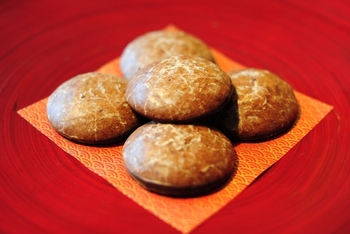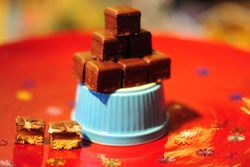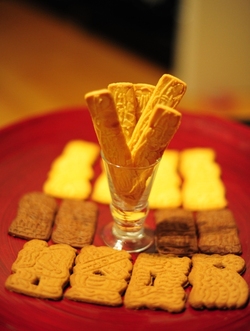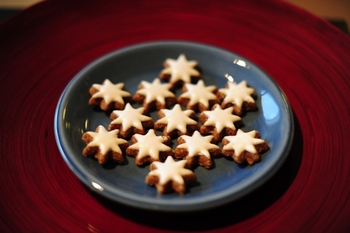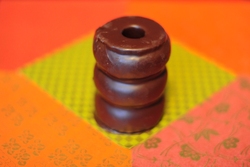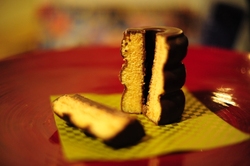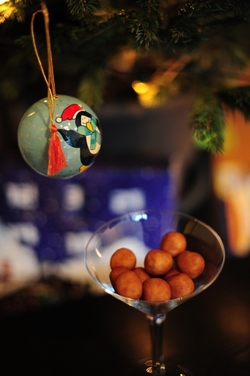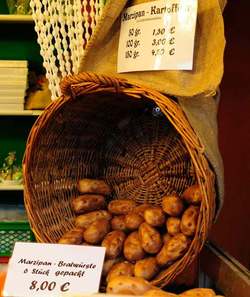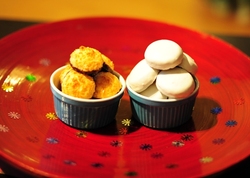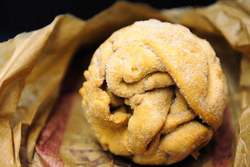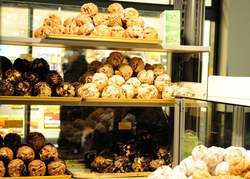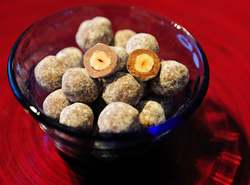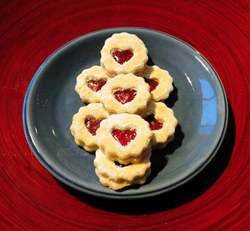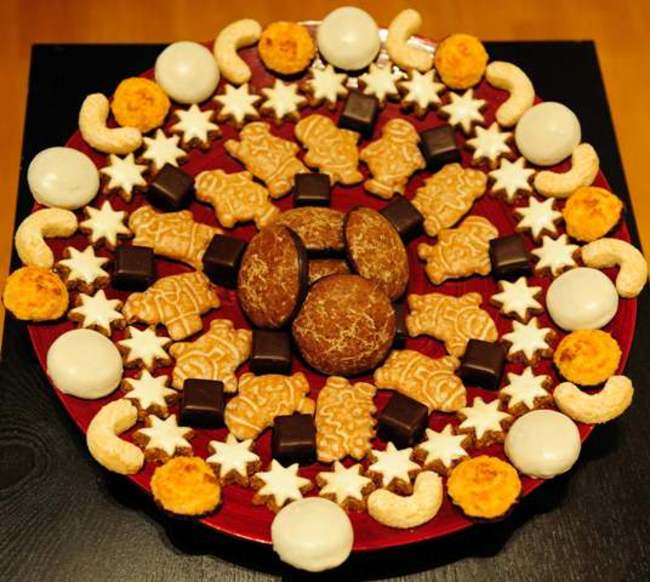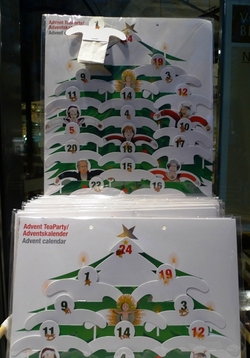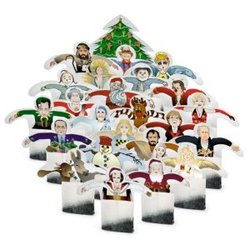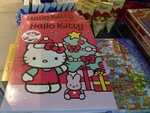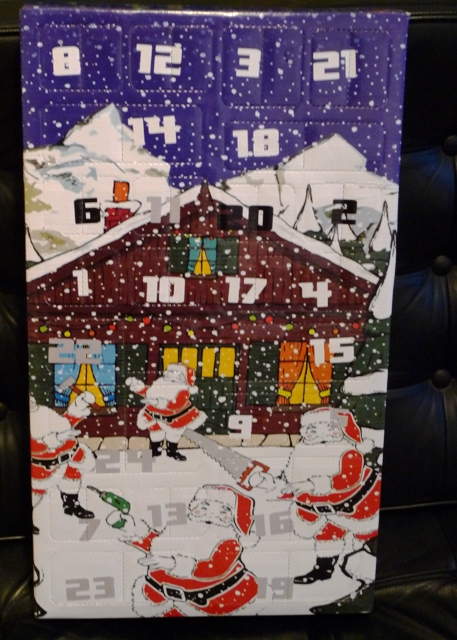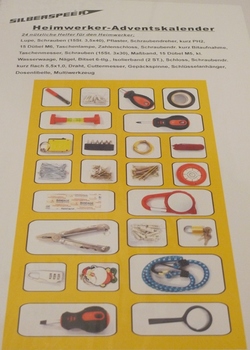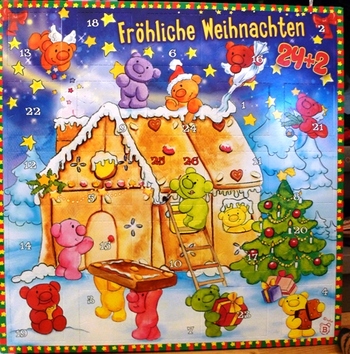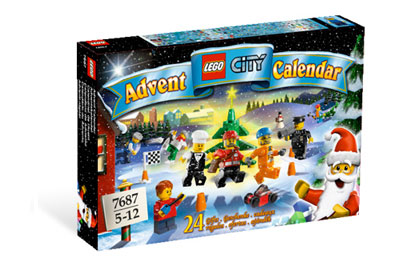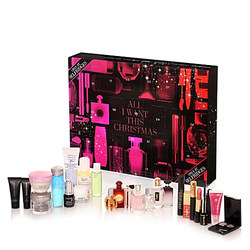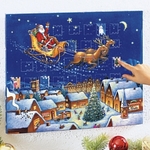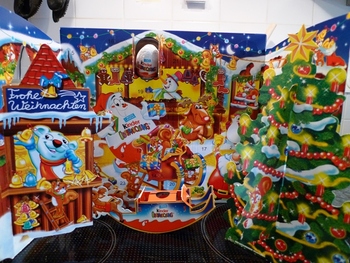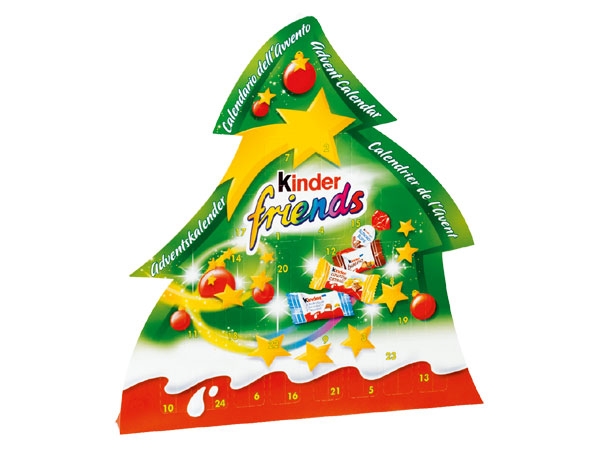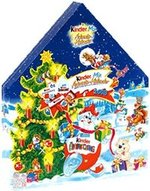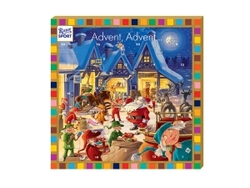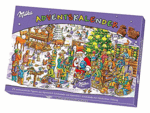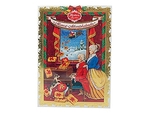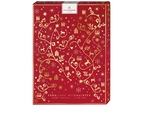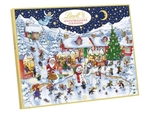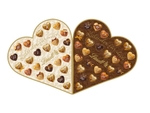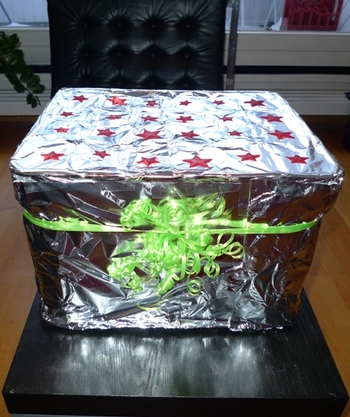German Christmas Treats
 Saturday, December 18, 2010 at 9:00
Saturday, December 18, 2010 at 9:00 Every culture has its own traditions for the holidays, and food plays a big part in Germany's.
For the month before Christmas, you can enjoy most of these in the Christmas markets that spring up in most public squares in the towns. We've sampled a taste of everything for you here.
First, of course, is Glühwein....It's basically mulled wine and is the most traditional hot beverage enjoyed in the cold in the German-speaking countries. You'll find all sorts of varieties and flavors these days, and even more modern hot cocktails (Hot Caipirinhas, etc). At a minimum, most stalls offer Kinderpunsch (non-alcoholic), Glühwein, and Glühwein mit Schuss (Glühwein with a shot of rum). It's a good way to stay warm while walking around the markets in winter...warms your hands and your insides!
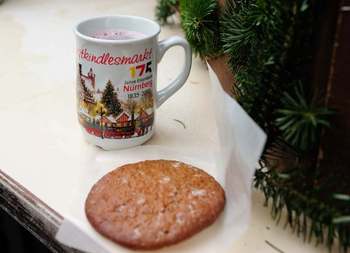 Gluhwein and Lebkuchen at the Nürnberg Christmas Market
Gluhwein and Lebkuchen at the Nürnberg Christmas Market
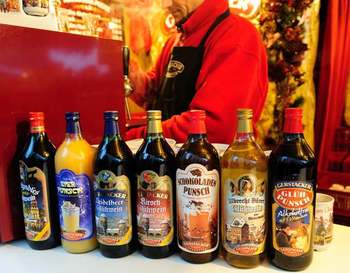 Gluhwein Varieties
Gluhwein Varieties
Vanillekipferl
These small, crescent-shaped cooies are vanilla flavored and coated in powdered sugar. They're usually made with ground almonds. You'll find these throughout most of Germany, as well as in Austria, Hungary, Czech Republic, and Slovakia. They vary from kind of tasteless to sublime...luckily these were perfectly vanilla tasting and melt-in-your-mouth. Excellent with coffee! 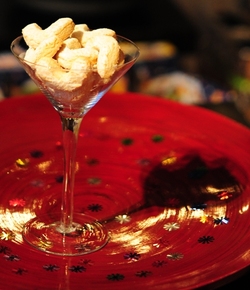 Vanillekipferl
Vanillekipferl
Lebkuchen
One of the most ubiquitous Christmas treats around this part of Germany is Lebkuchen. It comes in many varieties and shapes, can be iced or dipped in chocolate... It's spiced a bit like gingerbread, but not exactly the same. They're usually made with ground nuts, honey, and spices such as anise, cloves, ginger, and cardamom.
The quality also can range quite widely, but good Lebkuchen is really tasty and not at all dry. It orinally cam from Franconia, with Nürnberg now the famous source. Actually, Nürnberg has been quite successful in getting their products under "Protected Designation of Origin." (meaning that Nürnberger bratwurst can only come from Nürnberg, and Nürnberger Lebkuchen can only come from Nürnberg). The original variety usually sits atop what's basically the same as a giant communion wafer. Supposedly the monks used it to keep the cookies from sticking to the pan.
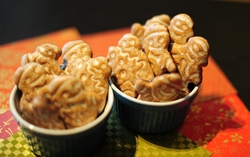 Lebkuchen Männer
Lebkuchen Männer 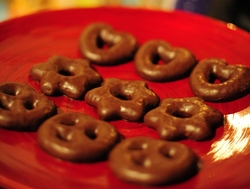 Chocolate Covered Lebkuchen
Chocolate Covered Lebkuchen
Dominostein
DominosteinNot my favorite Christmas treat, but they're not bad. These Dominos are a 3 layer treat, dipped in either dark or milk chocolate. Usually it's a lebkuchen bottom, with cherry or apricot jelly in the middle, and marzipan or cream on the top layer. These originated in Dresden, but are sold throughout Germany.
Then we have Spekulatius, Herr J's favorite. These are so tasty! Their taste like a combination of shortbread and gingerbread. They're thin and crunchy and come with designs stamped into them.
These are more traditionally for St. Nikolas Day (November 6th) and made of flour, brown sugar, honey, butter, and spices such as nutmeg, cardamom, ginger, and cloves.
Though they have stamped rolling pins and silicone molds now, the traditional method involves a hand-carved wooden mold. I prefer the spiced variety, but they also have butter Spekulatius, chocolate Spekulatius, and ones with almond slices on the bottom.
They seem to have originated in the Rhineland-Pfalz area, but are found widely across the country, and in Belgium and the Netherlands. Probably because they're so good!
I'm hoping these also might make a good substitute for graham-cracker crust in pies and bars. Graham crackers just don't exist here and key lime pie is soooo good!
Zimtsterne
Literally translated as "cinnamon stars," these little cookies from Schwabia are so tasty! They're chewy, cinnamony, with a crispy sweet icing on top. As with many of the Christmas cookies, these are made with ground almonds instead of flour.
Baumkuchen
While they just look like a chocolate covered stack of donuts, this cake is quite impressive. It's also common in Austria. A good, properly made baumkuchen can be rather pricey, too. The name "tree cake" comes from how it's cooked over a spit (rotisserie style) and the cake batter is applied layer by layer creating tree rings in the cake. Quite an intensive process, sometimes with 20 layers. Then the cake is take off the rotisserie, cut into pieces, and dipped in chocolate or fondant.
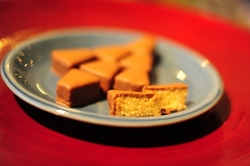 BaumkuchenschnittenThere's also a version called Baumkuchenschnitten ("tree cake sections") that are little pieces of the cake, dipped in chocolate. They also have the tree rings on them. The ones I tried have champagne in the cake and are really a little slice of heaven. So moist and tasty, with high quality milk chocolate.
BaumkuchenschnittenThere's also a version called Baumkuchenschnitten ("tree cake sections") that are little pieces of the cake, dipped in chocolate. They also have the tree rings on them. The ones I tried have champagne in the cake and are really a little slice of heaven. So moist and tasty, with high quality milk chocolate.
I've not been able to find anyone who knows why marzipan potatoes are traditional gifts in Advent, but they are everywhere. We tried the little ones, but in the markets they sell huge life-sized potatoes, made entirely of marzipan and dusted with cocoa powder. Some friends here say that it just was easier to make potatoes than anything else. They're marzipan, so are tasty, but in small doses.
Coconut Macaroons and Pfeffernüsse
Not to be confused with macarons, these are the chewy coconut ones we all know, with the bottoms dipped in dark chocolate. So tasty!
And on the right are Pfeffernüsse ("Pepper Nuts"), little hard, round cookies made of spiced dough dipped in icing. They're originally Dutch, but have made it down through Denmark, Germany, Austria. The taste is good - a bit spicier than gingerbread, usually with pepper included - but they are super hard and dry. These are traditional for St. Nikolaus Day (5th or 6th of December, depending on the region), but are sold throughout the Christmas season. You need to dip them in coffee, really, or wait a few weeks till they soften up. Given the choice, I'd take the macaroons and skip the pfeffernüsse.
Schneeball
These "Snowballs" are a fun contribution from the beautiful, old little town of Rothenburg ob der Tauber. They're basically strips of dough, balled up, fried, and dusted in sugar. They were originally served at weddings in the Franconia region, but now are served year round. OK, I know it's not exactly a Christmas treat only, but the name makes it fit this post!
The plain ones dusted in powdered or cinnamon sugar are the originals, but now they sell 20+ varieties - with different fillings (caramel, Cointreau, marzipan, etc) and toppings (chocolates, nuts, coconut, etc). We tried an original with cinnamon sugar from Diller in the Nürnberg train station. Pretty tasty! I think the filled ones would be too much, but maybe I'll try one when I finally make it to Rothenburg. It's a well-preserved walled city with a cool night watchman tour.
Candied Nuts
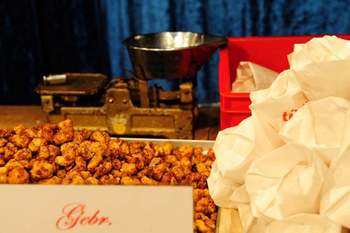 Candied Nuts at the Nürnberg Christmas Market
Candied Nuts at the Nürnberg Christmas Market
This is one of those times where I WISH that a photo could capture a scent. The smell of these candied nuts cooking is intoxicating. It makes me forget my words and just follow the scent, like a rat led by the Piper.
These are not exclusively Christmas treats - they're common at Oktoberfest and are sold in front of the Marienplatz Kaufhof year round. However, they are always a presence in every Christmas market.
These jam-filled sugar cookies are often called German Jam Cookies or Swiss Sandwiches, but the name translates to "rogues" or "scoundrels." They're a nice plain cookie base, with jam (apricot and currant are most common) in between two cookies, and a star or heart window cut in the top cookie. Then they're dusted with powdered sugar.
Stollen
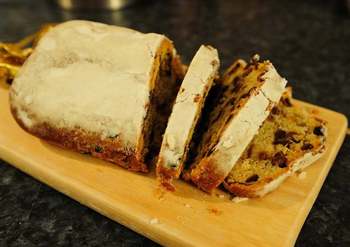 And it wouldn't be Christmas without fruitcake! In Germany, we have Stollen, which is a loaf of sweet bread filled with dried fruit and nuts and topped with powdered sugar. They vary quite widely, with "exotic fruit" varieties, marzipan chunks, or other fillings. The German version has been made for Christmas since the 1400's, in Saxony. Dresden still is know as the Stollen capital, I guess like Claxton, Georgia is the fruitcake capital of the US. There's an annual Stollen Festival in Dresden, where a 3-4 ton stollen is paraded through the city and then cut by a ceremonial knife and sold to partiers.
And it wouldn't be Christmas without fruitcake! In Germany, we have Stollen, which is a loaf of sweet bread filled with dried fruit and nuts and topped with powdered sugar. They vary quite widely, with "exotic fruit" varieties, marzipan chunks, or other fillings. The German version has been made for Christmas since the 1400's, in Saxony. Dresden still is know as the Stollen capital, I guess like Claxton, Georgia is the fruitcake capital of the US. There's an annual Stollen Festival in Dresden, where a 3-4 ton stollen is paraded through the city and then cut by a ceremonial knife and sold to partiers.
Though Dresdner Stollen is the classic, other regions have created their own. The lady selling Frankish Dresden explained that their variety has fewer nuts and fruit than the super packed Dresdner Stollen. The bakery in my apartment building makes with poppyseed filling or with the same nut filling as used in cinnamon rolls. Not exactly traditional, but really good!
 Frau A ...
Frau A ...  Post a Comment
Post a Comment  Food, Cooking, & Dining,
Food, Cooking, & Dining,  Germany & German Culture tagged
Germany & German Culture tagged  Christmas,
Christmas,  German food
German food  1 Reference ...
1 Reference ...  Print Article
Print Article  Email Article
Email Article 



